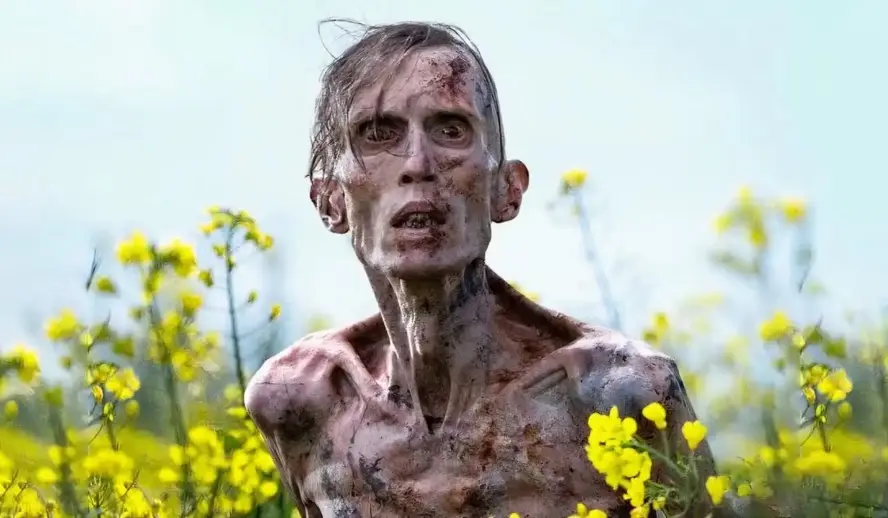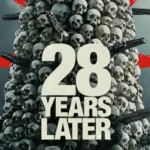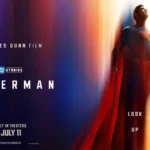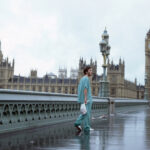Table of Contents

The Hollywood Insider – ’28 Years Later’ Shot on an iPhone
One of 2025’s biggest Cinematic surprises, ‘28 Years Later’ was shot not on an iPhone.
An iPhone. Can You Believe That?
That’s what helmed ‘28 Years Later’. Not an ARRI Alexa. Not a RED Helium. An iPhone.
The iPhone wasn’t always considered Cinematic. It started with snapping photos, and maybe recording a funny moment. But over time, filmmakers began using it to their advantage.
I mean, it makes sense in a weird way. It’s a lot smaller, a lot lighter, and way more accessible. So when it comes to fast-paced action scenes or first-person shots, I can see the appeal. But can the camera quality and sound really compare to a professional camera rig?
To think a 6.7-inch device—Apple’s iPhone 15 Pro Max—could take center stage in a franchise film, outpacing technology Hollywood has spent decades refining, is almost unbelievable. And yet, it’s exactly what happened.
Filmmakers like Danny Boyle, Sean Baker, and Steven Soderbergh have turned away from traditional Cinema cameras, like the ARRI Alexa—used in everything from ‘Skyfall’ (Daniel Craig) to ‘Dune’ (Zendaya, Timothée Chalamet)—in favor of a tool carried around by everyday people.
The question is: why?
Things to do:
-
Subscribe to The Hollywood Insider’s YouTube Channel, by clicking here.
-
Limited Time Offer – FREE Subscription to The Hollywood Insider
Box Office Says: This Risk Paid Off
If you’re wondering whether Boyle’s iPhone gamble was worth it, just look at the numbers. ‘28 Years Later’ opened with an estimated $30 million domestic haul—shattering the franchise’s previous records. For comparison:
- ‘28 Days Later’ (2002) opened at $10 million
- ‘28 Weeks Later’ (2007) opened with $9.8 million
- ‘28 Years Later’ made $14.1 million on Friday alone, including Thursday previews
In just one day, it beat both prior films’ entire weekend earnings. By the end of its opening weekend, it had doubled their total grosses—proving that audiences don’t care what camera was used. They care about the experience.
It’s funny to think that a blockbuster like this was shot mostly on a device so many of us grew up using—especially millennials. Makes you wonder if those iMovie edits from high school were training for something bigger after all. Who knows—if more people embraced the tools already in their hands, we might have a lot more Sean Bakers out there.
But it also raises a bigger question: do audiences even notice the difference?
Despite the bold filmmaking choice, much of the conversation hasn’t focused on the fact that the movie was shot largely on an iPhone—at least during its early release.
Perhaps the most Cinematic thing about the film isn’t the camera—it’s that viewers were too immersed to even care in the first place. Or maybe the shots just felt so natural, no one thought to question how it was made.
But if that’s really the case—if no one noticed until they were told it was shot on an iPhone—I can’t help but wonder what it would look like side by side with another action-packed zombie movie like ‘World War Z’ (Brad Pitt), or even the latest ‘F1‘ movie for that matter.
Domestic Total (So Far): $30 million
Worldwide Total (So Far): $60 million
WATCH THE TRAILER of the Film and the Revolution: ‘Can I Go Home Now?’
The Children Around the World Continue to Ask the question
The Billion-Dollar Phone in Your Pocket
Boyle took a technological leap, and it actually seemed to have paid off.
But again, we’re left with the why. Why make a big-budget film and not use high-budget equipment? Is it to prove a point—that movies can be made on something as simple as an everyday phone?
Is it meant to inspire people to stop saying, “I don’t have the right gear,” and just start creating? Or maybe there’s a bigger reason.
Maybe some films actually need that iPhone feel—something about the raw, unfiltered look that makes the story feel more real and immediate.
It’s that handheld, documentary-style approach we’ve seen in shows like ‘The Office’ or ‘The Studio’. Totally different tone from ‘28 Years Later’, of course—but that same up-close energy that makes you feel like you’re right there, watching it unfold in real time.
The iPhone in Cinema isn’t exactly new. Sean Baker shocked Sundance in 2015 with ‘Tangerine’, an indie shot entirely on an iPhone 5S.
Steven Soderbergh followed with ‘Unsane’ and ‘High Flying Bird’, calling mobile filmmaking “liberating” and “free from the machinery.”
‘28 Years Later’, is different. This isn’t an indie project with a limited release—it’s a franchise entry backed by a studio. It’s designed for mass audiences and high-stakes return.
The original ‘28 Days Later’, starring Cillian Murphy (‘Oppenheimer’, ‘Peaky Blinders’), and its sequel ‘28 Weeks Later’, featuring Jeremy Renner (‘Hawkeye’), were both shot using traditional studio cameras—from early digital video to high-end film setups.
Related article: – Want GUARANTEED SUCCESS? Remove these ten words from your vocabulary| Transform your life INSTANTLY
Related article: Brad Pitt’s ‘F1’ is a Classic Summer Blockbuster Made for the Big Screen
It All Comes Full Circle
This isn’t the first time Danny Boyle has turned to unconventional camera tech to get the shot he needed.
And in many ways, that answers the why.
Back in 2001, ‘28 Days Later’ had a major problem: how do you film an unknown actor (Cillian Murphy back then) walking through the deserted streets of London—one of the busiest cities in the world—without a massive budget or the ability to shut it all down?
The real challenge was making London look abandoned—like the apocalypse hit—without the time, money, or permits to shut it all down.
That’s where his solution came in to use small, portable cameras and film early in the morning in short, fast bursts before people crowded the streets again.
That’s how they got the iconic shots without blocking off roads or spending millions.
Boyle’s answer back then was to shoot on lightweight, low-resolution Canon digital cameras.
As WIRED explains, the gear allowed him to quickly capture eerie, iconic shots—like Cillian Murphy crossing an empty Westminster Bridge—in under an hour.
Now, nearly three decades later, Boyle found himself in a similar situation.
Only this time, instead of a deserted city, he needed to capture the raw, untouched wilderness of Northumbria—locations that were just as hard to control or access.
And once again, he ditched the traditional setup.
“Filming with iPhones allowed us to move without huge amounts of equipment,” Boyle told WIRED. “A lot of Northumbria looks like it would have looked 1,000 years ago. So we were able to move quickly and lightly to areas of the countryside that we wanted to retain their lack of human imprint.”
It was a practical and creative solution.
It allowed him to shoot in a way that preserved the authenticity of the setting, using natural light and handheld movement to immerse the audience in a version of the UK left to the wild.
Related article: EVOLUTION: Every Ryan Gosling Role From 1995 to 2020, All Performances Exceptionally Poignant
Related article: EVOLUTION: Every Henry Cavill Role From 2001 to 2021, All Performances Exceptionally Poignant
Related article: Written Vision, Blurred Lens: The Playwright’s Struggle in Film Direction
The Bigger Picture Behind the Lens
So, why would a filmmaker with a full studio budget choose to use an iPhone?
Part of it might be rebellion. Maybe Boyle wanted to challenge the idea that only big gear makes “real” Cinema.
In a world where Hollywood has been gatekept by expensive equipment and complex production pipelines, picking up a phone is a power move. It says, “This story matters more than the setup.”
But it also might be about emotion.
Smaller, more intimate tools change how a film feels. When a camera can move with you, hide in places bigger rigs can’t, or sit inches from a character’s face—it stops feeling staged. It starts to feel alive. And that’s especially powerful in a film like ‘28 Years Later’, where chaos, fear, and survival need to feel immediate.
For emerging filmmakers, that’s a message in itself. Stop waiting for the perfect lens or budget. Start telling stories. Literally tune back into your iMovie fanatic self. Because maybe it’s not about not having the right gear—maybe it’s about using the gear that makes your story work, or more so what cards you’re being dealt with. Sometimes, that’s an iPhone.
It really just goes to show—if you’ve got a filmmaker’s vision, an eye for casting, and the tech skills to match, even something as simple as an iPhone can create a blockbuster.
Related article: Understanding the Star Wars Timeline
Related article: A Tribute to Francis Ford Coppola: One of Cinema’s Unforgettable Directors | ‘Megalopolis’, ‘The Godfather’ & More
Related article: #metoo Revolution: Powerful Questions That Need Answers
Related article: FACT-CHECKED Series: Timothee Chalamet and 32 Facts about The Young Superstar
Related article: Double Talk: The History of the DVD Commentary
Will More Movies Be Shot on an iPhone?
So what happens next? Is this a one-time creative risk, or the start of something bigger?
Of course, part of this worked because studios trust Boyle.
The franchise has a loyal fanbase. But the success of ‘28 Years Later’,—earning an impressive 89% on Rotten Tomatoes and performing especially well at the box office—proves something important: audiences don’t necessarily care what camera was used. In fact, most probably didn’t even notice.
What they do care about is how a film makes them feel.
And Hollywood is watching.
Apple has already started investing heavily in its “Shot on iPhone” campaign, collaborating with directors to show off just how far the phone can go. Filmmakers like Zack Snyder (‘Justice League’) jumped on board with short projects like ‘Snow Steam Iron’, embracing the creative freedom of a smaller setup.
Film festivals have seen a rise in mobile-shot student submissions—many of which are award contenders.
Movies like ‘Tangerine’ and ’28 Years Later’ didn’t just prove iPhone filmmaking works—they proved it connects.
So yes, this might just change Hollywood.
But will an iPhone ever fully beat out big-budget cameras and traditional setups?
That part’s still unclear.
What we do know is this: the gap between indie and studio, expensive and accessible, is getting smaller.
And maybe that shift—toward boldness over budget—is exactly what Cinema needs right now.
What’s Next for the Stars of ‘28 Years Later’?
Aaron Taylor-Johnson is rumored to be stepping into the iconic role of James Bond in Denis Villeneuve’s highly anticipated reboot of the franchise.
Ralph Fiennes, meanwhile, has been confirmed to portray President Snow in the upcoming ‘Hunger Games’ prequel, ‘Sunrise on the Reaping’.
Cast and Crew of ‘28 Years Later’:
Directed by: Danny Boyle
Written by: Alex Garland
Cinematography: Anthony Dod Mantle
Edited by: Jon Harris
Cast: Jodie Comer as Isla, Aaron Taylor-Johnson as Jamie, Ralph Fiennes as Dr. Ian Kelson
By Emma Gladstone
Click here to read The Hollywood Insider’s CEO Pritan Ambroase’s love letter to Cinema, TV and Media. An excerpt from the love letter: The Hollywood Insider’s CEO/editor-in-chief Pritan Ambroase affirms, “We have the space and time for all your stories, no matter who/what/where you are. Media/Cinema/TV have a responsibility to better the world and The Hollywood Insider will continue to do so. Talent, diversity and authenticity matter in Cinema/TV, media and storytelling. In fact, I reckon that we should announce “talent-diversity-authenticity-storytelling-Cinema-Oscars-Academy-Awards” as synonyms of each other. We show respect to talent and stories regardless of their skin color, race, gender, sexuality, religion, nationality, etc., thus allowing authenticity into this system just by something as simple as accepting and showing respect to the human species’ factual diversity. We become greater just by respecting and appreciating talent in all its shapes, sizes, and forms. Award winners, which includes nominees, must be chosen on the greatness of their talent ALONE.
I am sure I am speaking for a multitude of Cinema lovers all over the world when I speak of the following sentiments that this medium of art has blessed me with. Cinema taught me about our world, at times in English and at times through the beautiful one-inch bar of subtitles. I learned from the stories in the global movies that we are all alike across all borders. Remember that one of the best symbols of many great civilizations and their prosperity has been the art they have left behind. This art can be in the form of paintings, sculptures, architecture, writings, inventions, etc. For our modern society, Cinema happens to be one of them. Cinema is more than just a form of entertainment, it is an integral part of society. I love the world uniting, be it for Cinema, TV, media, art, fashion, sport, etc. Please keep this going full speed.”
More Interesting Stories From The Hollywood Insider
– Want GUARANTEED SUCCESS? Remove these ten words from your vocabulary| Transform your life INSTANTLY
– A Tribute to Martin Scorsese: A Complete Analysis of the Life and Career of the Man Who Lives and Breathes Cinema
– Do you know the hidden messages in ‘Call Me By Your Name’? Find out behind the scenes facts in the full commentary and In-depth analysis of the cinematic masterpiece
– A Tribute To The Academy Awards: All Best Actor/Actress Speeches From The Beginning Of Oscars 1929-2019 | From Rami Malek, Leonardo DiCaprio To Denzel Washington, Halle Berry & Beyond | From Olivia Colman, Meryl Streep To Bette Davis & Beyond
– In the 32nd Year Of His Career, Keanu Reeves’ Face Continues To Reign After Launching Movies Earning Over $4.3 Billion In Total – “John Wick”, “Toy Story 4”, “Matrix”, And Many More

Emma Gladstone is an entertainment journalist dedicated to offering a fresh perspective in today’s media landscape. As a content writer for The Hollywood Insider, her goal is to serve as a break from negativity by focusing on positive, human-centered angles that uplift and inspire. Writing reviews and feature stories for The Hollywood Insider, Emma celebrates the transformative and authentic power of reporting, to promote meaningful change and substance in media. Her passion for global entertainment fuels her writing, creating stories that educate, empower, and resonate deeply with readers. Emma is truly thrilled to be writing for The Hollywood Insider, as their values align closely with hers.








